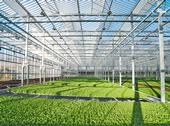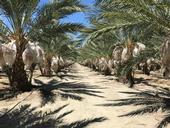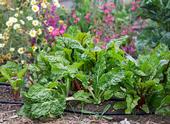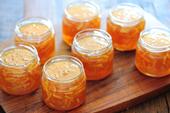- Author: Pamela Kan-Rice
- Author: Jodi Genshaft, Gotham Greens

Gotham Greens, a pioneer in indoor agriculture operating high-tech greenhouses across the United States, is placing its latest state-of-the-art greenhouse near UC Davis.
“We are building a Controlled Environment Agriculture Consortium to support and advance the indoor farming industry, grow more fresh produce on less land and create new jobs for Californians,” said Gabriel Youtsey, UC ANR chief innovation officer. “Gotham Greens is an anchoring partner of this research and industry collaboration that we hope will spur innovation, create a new indoor farming workforce and support industry growth.”
University of California Agriculture and Natural...
- Author: Pamela Kan-Rice

California's $86 million date industry produces more than half of the nation's dates. Most of the fruit is grown in the arid Coachella Valley. Despite efforts by growers to conserve water, data was lacking on date palms' actual water use to refine the best irrigation management for the crop until a recent research project led by Ali Montazar, UC Cooperative Extension irrigation and water management advisor for Imperial and Riverside counties.
“California dates are grown in the hottest and most arid climate in North America and require substantial amounts of water in order to bring a successful crop to fruition,” Albert Keck, Coachella Valley date grower and...
- Author: Pamela Kan-Rice

Californians growing food in cities now have help understanding the food safety laws that apply to them. A free publication containing California-specific information on rules and regulations for urban farmers was recently published by the University of California Agriculture and Natural Resources.
Growing fresh fruits and vegetables in community gardens, backyards and rooftops helps provide more food for urban communities, creates jobs and teaches people about the value of healthy foods, according to Jennifer Sowerwine, lead author and UC Cooperative Extension specialist at UC Berkeley.
"There are a growing number of backyard and community producers who are scaling...
- Author: Laura R. Crothers

The economic shocks brought on by the COVID-19 pandemic have pushed California's farmers and ranchers to quickly embrace new business practices — including creative new ways to sell directly to consumers. UC ANR and partners are offering an eight-part series of free virtual trainings to help producers build their businesses with agritourism and other direct-to-consumer sales.
The COVID-19 pandemic has been a huge shock to California's food economy, forcing many of the state's growers to embrace new business practices and drop old ones as “shelter-in-place” directives...
- Author: Kathy Low, UC Master Food Preserver of Solano and Yolo Counties

Growing up, my parents told us stories of how as kids, they kept from starving during the Great Depression by not letting anything edible go to waste. To stay alive, they learned to eat beef tripe (stomach lining), chicken feet, cow tongue and other things not normally consumed. It was their stories that got me interested in learning about and sharing information on parts of fruits and vegetables normally discarded that can be preserved and eaten. Examples include citrus peel and watermelon rind.
The next time you eat an orange, grapefruit, tangerine or other citrus, you don't need to throw out the peel. Instead you can dehydrate it. Remove the pith (the white fibrous material between the skin and the peel)...



